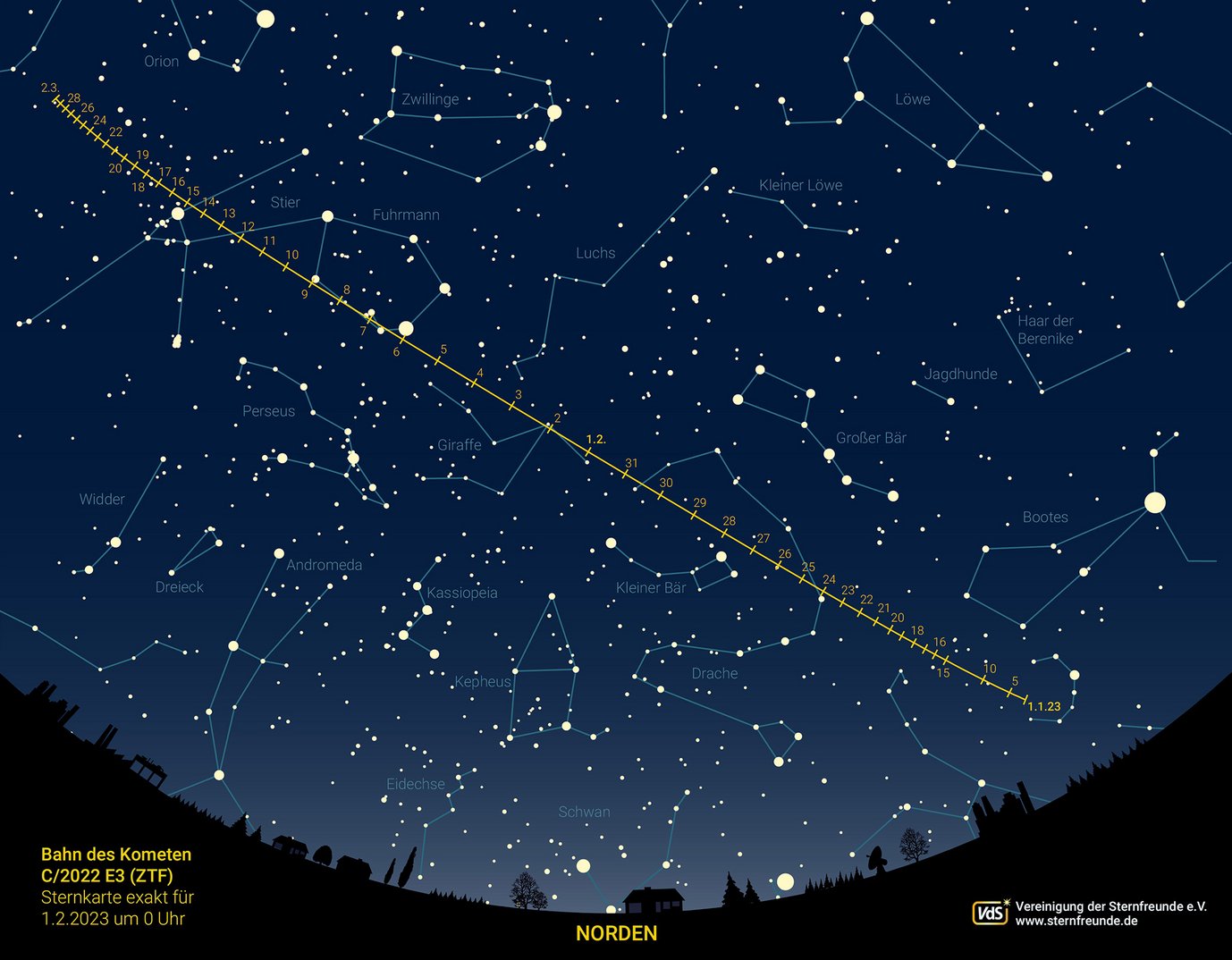C/2022 E3 (ZTF) - a comet for binoculars
The new year starts with an interesting celestial encounter: Comet C/2022 E3 (ZTF) will reach its maximum brightness at about 5.5 mag in early February and will be easily observable with binoculars. It will first be an object of the morning sky, then will be high in the sky near Polaris throughout the night and will say goodbye in the evening sky early in March.
The comet was discovered by the "Zwicky Transient Facility" on 2 March 2022 and therefore bears the acronym "ZTF" in its name. At the time of discovery, it was at a distance of 4.3 astronomical units and was 17.3 mag "bright". One Astronomical Unit (abbreviated 1 AU) corresponds to the mean distance Earth-Sun, which is about 150 million km. The astronomical brightness scale with the unit magnitudo (abbreviated mag) assigns smaller numerical values to brighter objects. Stars with a brightness of 6 mag are barely visible as a faint dot with the naked eye under good conditions. The dwarf planet Pluto on the other hand does not get brighter than 14 mag and therefore you always need a telescope to see it.
C/2022 E3 (ZTF) is a long-period comet whose farthest point from the Sun is 2800 AU. Its orbital period is about 50,000 years. With an inclination of 109°, its orbit is nearly perpendicular to the ecliptic - convenient for us observers on Earth.
On 12 January 2023, C/2022 E3 makes its closest approach to the Sun with a distance of 1.1 AU, and on 1 February 2023 its closest approach to Earth with 0.28 AU (42 million km). Coming from the north, it approaches the Earth's orbital plane (the ecliptic), which it pierces to the south on 12 February. When comet ZTF reaches its maximum brightness at the end of January/beginning of February, it is not far from the northern celestial pole as seen from Earth and can therefore be seen all night long from the northern hemisphere.

The best visibility time begins after mid-January, when the comet is brighter than 7 mag and the waning Moon brightens the sky less and less. New moon occurs on Jan 21. The days just before the end of January will be optimal: The comet will almost have reached its maximum brightness with about 5.5 mag and the Moon in the first quarter sets in the second half of the night. Afterwards moonlight unfortunately affects observations (full Moon on 5 February). In the second week of February there is another observation window in the evening sky; C/2022 E3 will then still have about 6 mag.
On 10/11 February comet ZTF will pass close to Mars and on 15/16 February it will be found right next to Aldebaran in Taurus. Then the brightness of the comet is only 7 mag and its time as a "binocular comet" comes to an end.
The maximum brightness of 5.5 mag is quite remarkable for a comet, under very dark skies you might even be able to see it with the naked eye, but you have to know exactly where to find it in the sky. For this you can use the finding charts of the German amateur astronomy association (Vereinigung der Sternfreunde). If you want to use your own star atlas, you can find the comet's position in an ephemeris table.
German-speaking comet observers exchange information about current developments and images in the forum of the Vereinigung der Sternfreunde. Further information about comets and an extensive archive of images can be found on the website of their working group on comets (in German).
